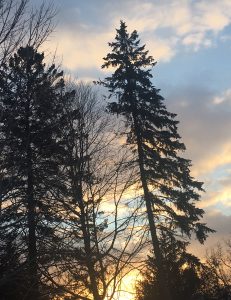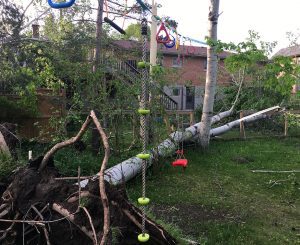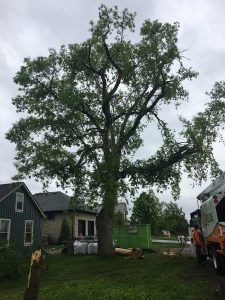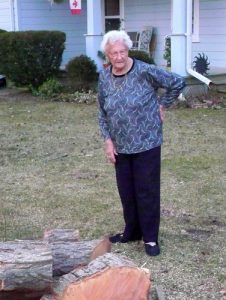
I remember a sultry afternoon in the 1990s, a few years after my wife and I and our two daughters had arrived and put down roots here in Uxbridge. I was sitting on our neighbour’s porch. The July sunshine beat down on Balsam Street North with all the intensity of a mid-summer heat wave. My neighbour, Ronnie Egan, had invited me to sit for a few minutes’ rest from cutting grass. We were both enjoying the shady respite, when she pointed to the Manitoba maple trees that deflected the intense rays of the afternoon sun from both her house and mine.
“Sentries,” she said. “They’re like sentries up and down our street.”
I noted her military terminology referring to the trees – she being a Second World War veteran of the Women’s Royal Canadian Naval Service – and wondered why she’d chosen that word to describe the mature trees along our street. Not a scientist, but a pragmatist, Ronnie emphasized how much those trees protected us, not just from summer heat, but from winter blizzards. Then, careful not to offend any sensibilities of her age, I suggested maybe she’d planted them 50 or 60 years earlier.
“They were here from before the war,” she said and she repeated, “Sentries.” Clearly, she loved those towering maples.
If she were still with us, events of this past week would have broken Ronnie’s heart. Along our street – like so many in the older sections of town – most mature trees in both front and backyards faced the full intensity of the May 21 storm. But they were no match for the derecho (now an officially recognized tornado) that cut a swath through old Uxbridge.

The EF-2-velocity winds smashed into those century-old trees and either shattered them into kindling or uprooted and toppled them like bowling pins. Save the one Manitoba maple in front of our house, after the storm almost all of Ronnie’s sentries were gone. A century of protecting us and our homes had disappeared in just a few violent minutes.
The widespread damage became clearer to me last Sunday (May 29), when a number of us dog owners gathered at the Lions Club pavilion on the fairgrounds for our annual walk-a-thon to raise funds for the Lions Foundation of Canada Dog Guides. Once we’d organized the group and pledges were logged, we led our dogs from Elgin Park for our fundraising walk through town.
Our route passed block after block of damaged houses and apartment buildings; and we all wondered aloud about friends and neighbours put out of their homes by the storm. But equally difficult to stomach were the gaping holes we witnessed in front-yard tree lines, huge piles of now discarded tree limbs and trunks, and worst – the vast stretches of open sky where Uxbridge’s famous green canopy once stood.
One of our dog-walkers remarked, “We won’t see anything like those old trees again for a generation.”

For our family, the coup de grâce in the days after the storm. As we awaited our turn for services to clear downed trees, collect debris and restore hydro, Joel Movray from Uxbridge Tree Service arrived. We’d asked him to pay a special visit for a closer look at the Manitoba maple that had withstood the ferocity of the storm in front of our house while other trees had fallen.
We hesitated, but showed him a visible crack up the maple’s main trunk. He surmised the centrifugal force of the winds had twisted the tree so severely that it had sustained a metres-long crack up its spine.
“I’m afraid it’s time,” he winced. “For the safety of your house, I think it’ll have to come down.”
The next morning the cherry-picker truck and crew arrived. As they strapped on their safety gear and readied their chainsaws, Jayne and I took a few last pictures of our stalwart maple shading our entire home. She even walked around the tree passing her hand over its rough bark and mortal wounds. She said a thank-you out loud to the tree.

I sat on the stump of a mature spruce tree snapped off by the winds in the storm. The year we moved in (1987), I’d been able to hang Christmas lights from top lead-branch to its bottom branches; but the now 30-foot-tall spruce was so much brush and severed limbs.
And I thought of my neighbour Ronnie Egan and that sultry summer afternoon when she’d paid tribute to her “sentries” on Balsam, now – with the cutting down of our Manitoba maple – all but gone. A changing of the guard, as it were, and further evidence of a painful changing of the climate.